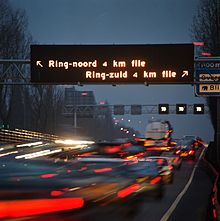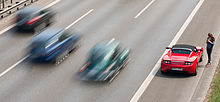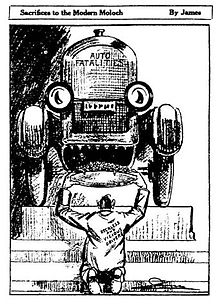Essential Road Safety Tips: Ensuring Safe Journeys for All
In the hustle and bustle of our daily lives, it's easy to overlook the importance of road safety. However, ensuring safe journeys should be a top priority for everyone on the road, whether you're a driver, pedestrian, or cyclist. With that in mind, let's delve into some essential road safety tips that can help prevent accidents and save lives.
Obey Traffic Laws:
Traffic laws are in place for a reason – to keep everyone safe. Always adhere to speed limits, stop at red lights and stop signs, and yield to pedestrians in crosswalks. Remember, following these rules isn't just a legal requirement; it's a moral obligation to protect yourself and others.
Buckle Up:
Wearing seat belts is one of the simplest and most effective ways to reduce the risk of injury or death in a car accident. Ensure that everyone in the vehicle, including passengers in the back seat, wears their seat belt properly at all times.
Avoid Distractions:
Distracted driving is a leading cause of accidents on the road. Whether it's texting, talking on the phone, eating, or adjusting the radio, any distraction can significantly impair your ability to react to changing road conditions. Keep your focus on the road and save the distractions for when you've reached your destination.
Never Drink and Drive:
Driving under the influence of alcohol or drugs is not only illegal but also extremely dangerous. Alcohol impairs judgment, slows reaction times, and decreases coordination, putting everyone on the road at risk. If you plan to drink, designate a sober driver or use alternative transportation options such as a taxi or ride-sharing service.
Maintain a Safe Distance:
Always maintain a safe distance between your vehicle and the one in front of you. This gives you ample time to react if the vehicle ahead suddenly stops or slows down. A good rule of thumb is to keep at least a three-second gap in normal conditions and increase it in adverse weather or heavy traffic.
Use Turn Signals:
Signaling your intentions before turning or changing lanes alerts other drivers to your actions, reducing the risk of collisions. Get into the habit of using your turn signals well in advance to give others time to react and adjust their driving accordingly.
Watch for Pedestrians:
Pedestrians have the right of way at crosswalks and intersections, so always be vigilant and yield to them. Exercise caution, especially in areas with heavy foot traffic, such as school zones and urban areas. Additionally, be aware of pedestrians when backing out of parking spaces or driveways.
Regular Vehicle Maintenance:
Properly maintaining your vehicle is essential for road safety. Schedule regular inspections and servicing to check for issues with brakes, tires, lights, and other critical components. Keeping your vehicle in top condition not only reduces the risk of breakdowns but also enhances safety on the road.
Adjust for Weather Conditions:
Weather can significantly impact road conditions and driving safety. Adjust your driving behavior accordingly, whether it's slowing down in rain or snow, increasing following distance in foggy conditions, or using headlights during low visibility. Always err on the side of caution when faced with adverse weather.
Stay Alert and Focused:
Finally, stay alert and attentive while driving. Avoid driving when tired or drowsy, as fatigue can impair your judgment and reaction times. Take regular breaks on long journeys, and if you feel too tired to drive, pull over and rest until you're fully alert. Sidewalks, curbs and traffic signals in Hagerstown, Maryland, United States
Sidewalks, curbs and traffic signals in Hagerstown, Maryland, United States Speed limits in different areas, unusually with only a "recommended" limit (130 km/h) for the Autobahn
Speed limits in different areas, unusually with only a "recommended" limit (130 km/h) for the Autobahn DRIP[Note 1] variable message sign guiding traffic on the Dutch A13 motorway
DRIP[Note 1] variable message sign guiding traffic on the Dutch A13 motorway Vehicles experiencing a breakdown or an emergency can stop in the emergency lane; these lanes may themselves present risks to traffic.
Vehicles experiencing a breakdown or an emergency can stop in the emergency lane; these lanes may themselves present risks to traffic. Sacrifices to the Modern Moloch, a 1922 cartoon published in The New York Times, criticizing the apparent acceptance by society of increasing automobile-related fatalities
Sacrifices to the Modern Moloch, a 1922 cartoon published in The New York Times, criticizing the apparent acceptance by society of increasing automobile-related fatalities
conclusion,
road safety is everyone's responsibility. By following these essential road safety tips, we can all play a part in reducing accidents, injuries, and fatalities on our roads. Remember, it only takes one moment of carelessness to change lives forever, so let's make safe driving a priority every time we hit the road.
- AAA Foundation for Traffic Safety – Nonprofit organization in Washington D.C., United States (in the US)
- Assured clear distance ahead – Safe driving distance between cars
- Bollard – Post used for mooring, traffic etc.
- Cyclability – Degree of the ease of cycling
- Defensive driving – Practice of anticipating dangerous driving situations
- Driving under the influence – Driving a motor vehicle while under the influence of an impairing substance
- EuroRAP – European road safety organization
- Fatality Analysis Reporting System – US system to report fatal traffic crashes
- Geometric design of roads – Geometry of road design
- Highway Safety Manual
- Humanity & Inclusion – Non-governmental organization
- ISO 39001 – Traffic safety standard
- Jersey barrier – Modular concrete or plastic barrier for separating vehicle traffic
- List of countries by traffic-related death rate
- National Highway Traffic Safety Administration – American agency of the Executive Branch of the Department of Transportation
- National Traffic and Motor Vehicle Safety Act – United States federal law
- Reported Road Casualties Great Britain – Statistical publication on traffic casualties in the UK
- Road surface marking – Any kind of device or material used on a road surface to convey official information
- Rules of the road – Phenomenon of movement by humans on foot or using vehicles
- Speed limit – Maximum legal speed of vehicles
- Traffic break – Separation in the flow of traffic along a road or highway
- Traffic collision – Incident when a vehicle collides with another object











































